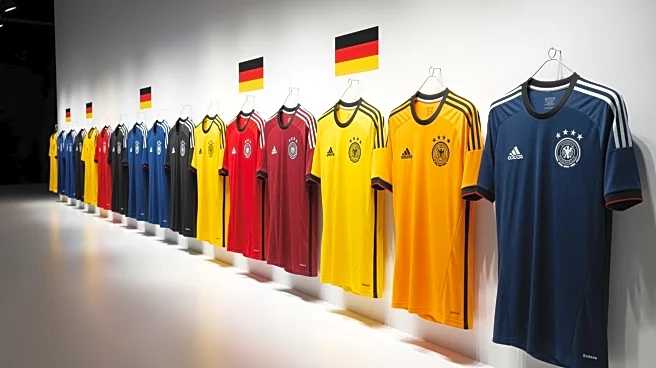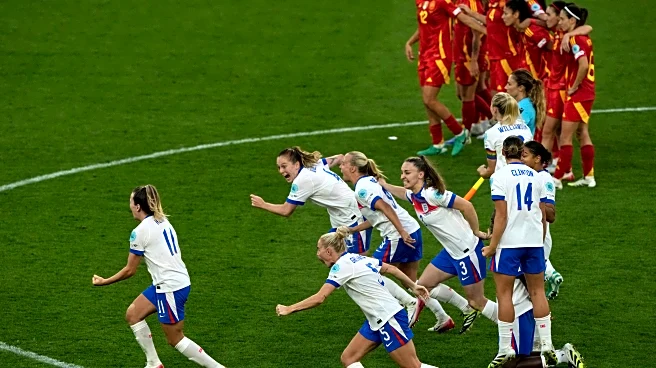What's Happening?
Adidas has launched the first wave of officially licensed national team jerseys for the 2026 World Cup, focusing on home kits for 20 teams, including Germany. The jerseys are now available for purchase,
with away kits expected to be released later. Germany, under the leadership of Julian Nagelsmann, is aiming to regain its status as a top contender after disappointing performances in the 2018 and 2022 World Cups. The team is bolstered by young talents such as Jamal Musiala, Florian Wirtz, and Kai Havertz, who bring creativity and tactical discipline to the squad. Adidas's release of these jerseys is part of the buildup to the World Cup, which will be held in North America next summer.
Why It's Important?
The release of the 2026 World Cup jerseys by Adidas is significant for several reasons. It marks the beginning of the commercial and fan engagement phase leading up to the tournament, which is one of the most watched sporting events globally. For Adidas, this represents a major opportunity to boost merchandise sales and brand visibility, especially as fans gear up to support their teams. The focus on Germany's team highlights the country's potential resurgence in international football, driven by a new generation of players. This could influence fan sentiment and increase demand for German team merchandise, impacting Adidas's sales and market strategy.
What's Next?
As the World Cup approaches, Adidas is likely to continue its marketing efforts, releasing away kits and possibly special edition jerseys. Fans can expect more promotional activities and collaborations aimed at enhancing the World Cup experience. For Germany, the focus will be on preparing the team to compete at the highest level, leveraging their young talents and tactical strategies. The performance of the team in the tournament could further influence merchandise sales and fan engagement, making it crucial for Adidas to align its marketing strategies with the team's progress.
Beyond the Headlines
The release of these jerseys also touches on broader themes such as the intersection of sports and commerce, where major events like the World Cup drive significant economic activity. It highlights the role of sports apparel companies in shaping fan culture and engagement through strategic product launches. Additionally, the focus on Germany's young players underscores the evolving dynamics in international football, where emerging talents are increasingly pivotal to national teams' success.













